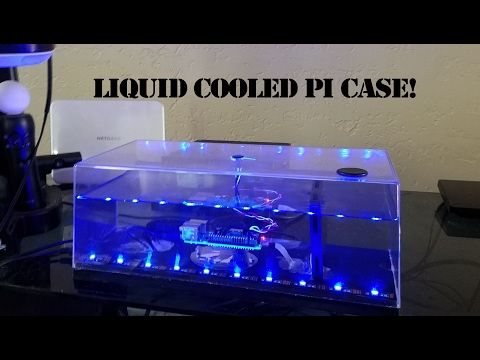The Next Fontier: Oil Submerged Gaming PC’s
There have been a few examples over the years of oil-based cooling for pcs but nothing geared towards the kit builder. With mainstream mineral oil pc cooling kits cropping up all over the internet I felt I would take a look at what it is and if there is any advantages over PC watercooling.
Some of you may just be getting your head around the idea of water cooling your precious hardware, now you have a whole new paradigm in pc cooling to get used to. Submerging your components completely in oil.
While you may think its crazy to submerge your pc in oil in order to get some extra degrees knocked off your temperatures but it’s actually a very efficient and safe way to cool your high-end pc components enabling you to hit higher overclocks.
How does Oil PC Cooling Work?
Mineral oil which is odourless, looks and acts like water but behaves very differently, it ‘diffuses’ heat rather than actively cooling like with air and liquid-based solutions. The oil does not have free electrons which have to be present in order to conduct electricity, this means its non-conductive and 100% safe to your hardware regardless of how messy cleanup operations can be.
Why Choose Oil over Liquid PC Cooling?
I feel oil submerged computers are more for hobbyists and PC cooling enthusiasts wanting to try something new, oil is thicker than water so therefore does not carry heat away from components as well as water meaning instant cooling power is not there when us overclockers need it.
Mineral Oil Holds More Heat, which means you need bigger radiators to compensate
While mineral-based pc cooling kits do not conduct heat as well as its water counterpart it does hold a lot of heat and keeps it at a stable temperature once it heats up to a certain point, perfect for server environments where heat is a common problem.
Mineral Oil or Water Based PC Cooling?
From my own personal experience, water-based kits do a lot better job of delivering instant heat dissipation, which as an overclocker is perfect for me, however, that does not go to say that oil submerged pc cooling does not have its place in the computing community, but from my own perspective I don’t feel that it’s in the overclocking world.
If you are more interested in gaming, overclocking and LAN Parties then I would say avoid submerging your components in oil, it would be far too heavy to easily transport to and from LANs, you might want to consider water cooling your gaming rig, heat dissipation while more stable at higher temperatures does not match the instant bite water delivers under intense load.
Do you have a mineral oil submerged computer? – Let me know in the comments I would really love to hear your people s experiences and what you think about it compared to the old-fashioned heat sinks, liquid cooling or phase change builds.
Gigabyte’s Custom PC Houses Fish Above a Submerged System
There are case mods that attract attention with bright LEDs and custom-cut cases, and then there are those that attempt something truly different and daring.
This system we saw at the Gigabyte/Aorus booth at Taipei 101 here at Computex definitely falls into the latter category.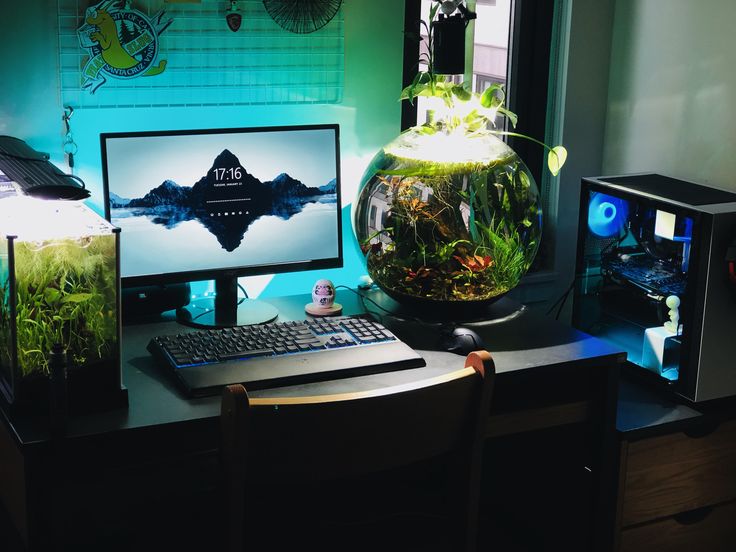 It combines an immersion-cooled PC with a small school of guppies living in a state of what appears to be ignorant bliss above a sunken (and spinning) Aorus GTX 1080, and with a matching motherboard as the backdrop.
It combines an immersion-cooled PC with a small school of guppies living in a state of what appears to be ignorant bliss above a sunken (and spinning) Aorus GTX 1080, and with a matching motherboard as the backdrop.
According to a Gigabyte rep, this in-house-designed system, which has no official name, has its components submerged in a non-toxic, non-conductive 3M liquid that’s typically used to keep data centers cool. While we weren’t able to confirm the exact liquid used, it’s probably a derivative of the company’s Novec line. Both the graphics card and the motherboard (which hides behind the fish and a separate pane of glass) are submerged in the liquid. And, to be as clear as the liquid itself, the system was powered up and running during the demo.
There’s no protective barrier separating the 3M liquid below from the water and the fish above it. But the density of the cooling liquid keeps the fish (and their leavings) safely in the water above, and a carbon filter system installed on the side keeps the environment clean, just like any other aquarium setup.
To further ensure the safety of the fish (and the submerged PC, we suppose), a custom cooling system using a trio of in-line CPU coolers pumps the 3M liquid out of the system for cooling and temperature monitoring, making sure the water above the liquid remains an optimal temperature for the fish living above. If the 3M liquid got too hot, it would turn into a gas and bubble up through the water. That would probably be bad for our finned friends, but the water would likely heat up to deadly levels before that happened anyway. Let’s hope Gigabyte was extra careful about choosing reliable components for this setup.
We’re always wary of situations like this where animals could be subjected to unhealthy or dangerous conditions for the sake of some wow-factor at a tech trade show. But we were told by Gigabyte that these fish had been living happily in their unusual home for two months so far, and that not a single swimming resident had died.
That’s certainly a better track record than we remember from our own attempts at creating fish habitats in our homes in decades past. Maybe next year Gigabyte will take this idea to the logical next level: A fully submerged data center, protected by sharks—possibly with laser beams. Now that’s the kind of data security we could really get excited about.
Maybe next year Gigabyte will take this idea to the logical next level: A fully submerged data center, protected by sharks—possibly with laser beams. Now that’s the kind of data security we could really get excited about.
Get instant access to breaking news, in-depth reviews and helpful tips.
Contact me with news and offers from other Future brandsReceive email from us on behalf of our trusted partners or sponsors
After a rough start with the Mattel Aquarius as a child, Matt built his first PC in the late 1990s and ventured into mild PC modding in the early 2000s. He’s spent the last 15 years covering emerging technology for Smithsonian, Popular Science, and Consumer Reports, while testing components and PCs for Computer Shopper, PCMag and Digital Trends.
How to choose an aquarium chiller and how it works » Industrial Water Chiller Manufacturer from China
How an aquarium chiller works
Selecting the Right Chiller Using Tons/Btu
What parameters do you need to get the right chiller tonnage
Chiller tonnage formula
Do I really need a chiller?
How an aquarium chiller works
Most aquarium chillers use a vapor compression method to cool the aquarium water.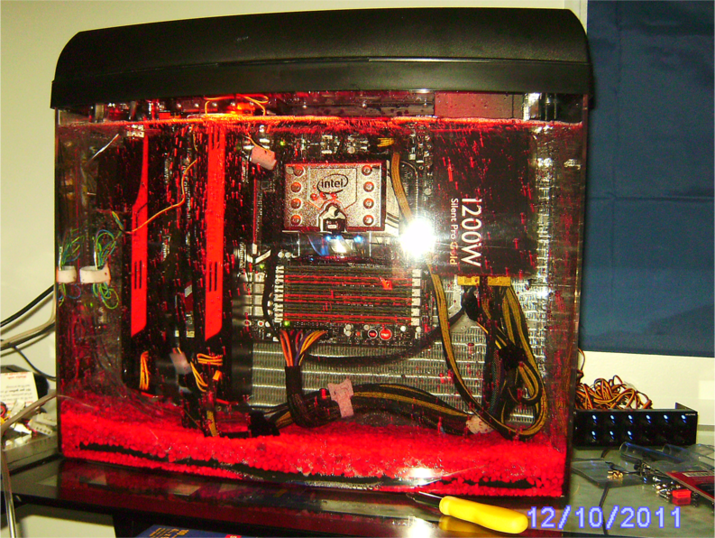 While the science behind this process can be a bit complex, it’s helpful to understand the basic principles and components in order to properly operate and maintain your chiller. nine0003
While the science behind this process can be a bit complex, it’s helpful to understand the basic principles and components in order to properly operate and maintain your chiller. nine0003
The diagram above shows the main parts of a typical aquarium cooler and we have outlined the features below to help you better understand exactly how your aquarium cooler works.
- Aquarium water is pumped to the chiller and enters Heat exchanger . Inside the heat exchanger, aquarium water flows through a series of cold metal coils filled with refrigerant. Here, heat is transferred from the aquarium water to the refrigerant. nine0024
- The heated refrigerant is compressed and changed from liquid to gas inside the compressor. The pressure generated inside the compressor moves the refrigerant through the refrigeration system.
- The refrigerant gas is sent to condenser from the pressurized compressor. A fan blows air over the condenser, cooling the refrigerant inside and removing heat to the atmosphere around the chiller.
 This is why it is important to place the chiller in a well ventilated area. This process is similar to what happens in your car’s radiator. nine0024
This is why it is important to place the chiller in a well ventilated area. This process is similar to what happens in your car’s radiator. nine0024
- As the refrigerant passes through the condenser, it cools down and turns back into a liquid.
- The refrigerant from the condenser passes through the expansion valve which reduces the pressure inside the refrigerant line by controlling the cooling rate of the aquarium water inside the evaporator or heat exchange.
- A temperature controller monitors the water temperature in your aquarium and automatically turns the cooler on when the temperature rises and turns it off when the temperature is in the right range. The temperature controller is built into most chillers, but is sometimes sold separately depending on the chiller brand. nine0024
Choosing the Right Ton/Btu Chiller
Choosing an aquarium cooler not only depends on how much water your aquarium can hold, you also have to consider what temperature drop you need to achieve and the temperature of the air around the cooler.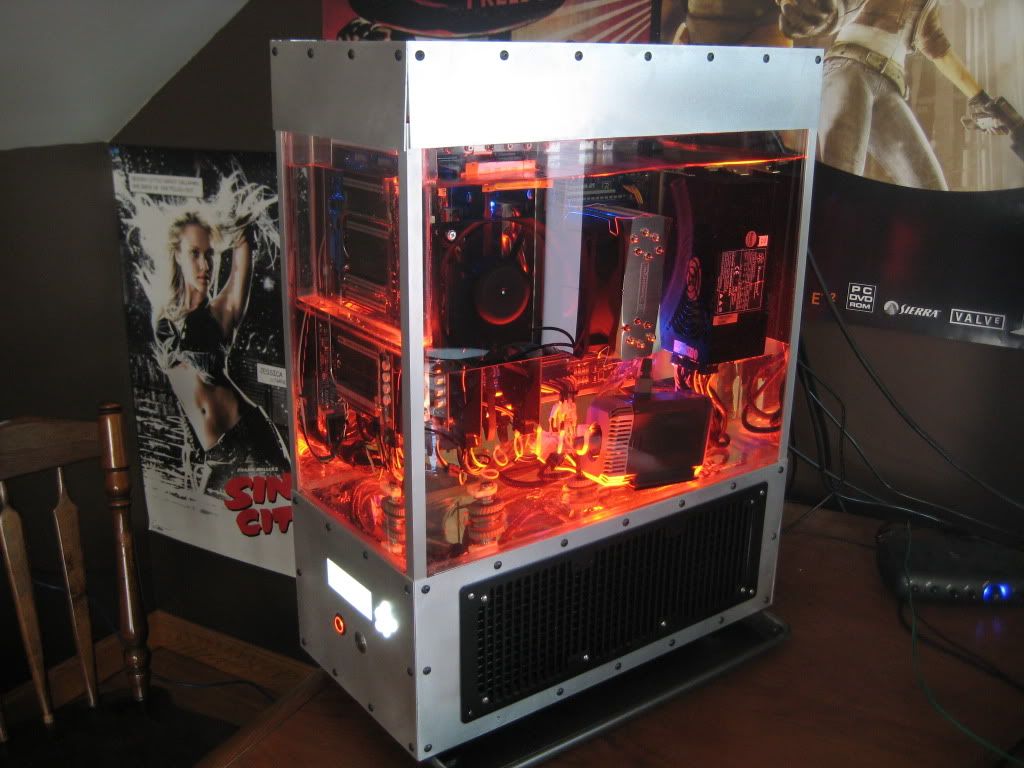 A chiller that needs to lower the water temperature by only 3-5°F does not require as much energy as a chiller that cools the water by 10-15°F. In addition, higher ambient temperatures (above +/- 75°F) around the chiller itself will reduce cooling capacity. If the ambient air is too hot (above 78°F), the chiller will not be able to cool at all. nine0003
A chiller that needs to lower the water temperature by only 3-5°F does not require as much energy as a chiller that cools the water by 10-15°F. In addition, higher ambient temperatures (above +/- 75°F) around the chiller itself will reduce cooling capacity. If the ambient air is too hot (above 78°F), the chiller will not be able to cool at all. nine0003
With this in mind, there is a simple calculation or general rule that we can use to estimate how much energy it will take to reach the desired temperature in our tanks using a cooling ton (or Btu). Most chiller manufacturers list a ton rating for their chillers, which indicates how much heat the chiller can remove per hour. Keep in mind that this formula does not take into account additional heat sources and assumes the chiller is located somewhere with an acceptable air temperature of around 70°F. nine0003
- l/min
- gpm
There are also special rules for sizing low temperature (below 5°C) chillers.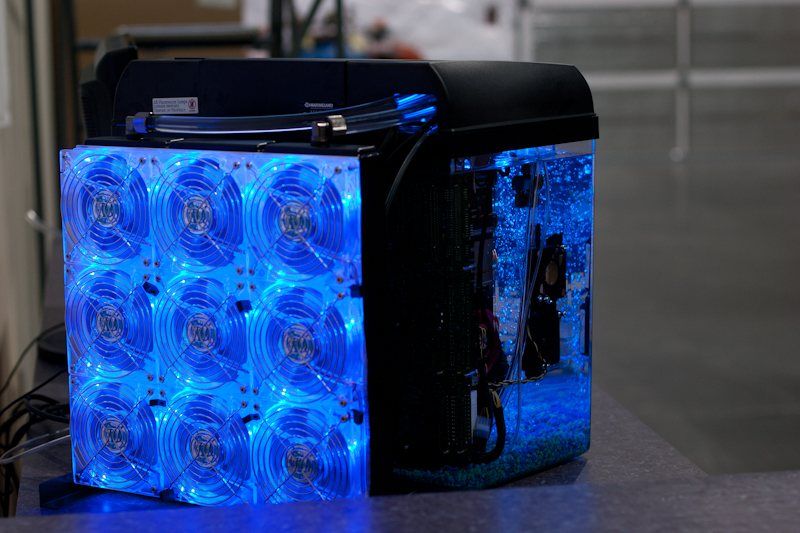 Please feel free to contact us.
Please feel free to contact us.
There are also special rules for sizing low temperature (below 5°C) chillers. Please feel free to contact us.
What parameters do you need to get the correct chiller tonnage
Fill in the fields with the following three parameters to get the approximate chiller size required for your application. nine0003
- Flow rate
- Inlet water temperature
- Desired chilled water temperature
Chiller Tonnage Formula
- Temperature Difference Calculation = Entering Water Temperature (°c) — Desired Chilled Water Temperature
- Calculate the amount of water you need per hour (m³/h)
- Calculate tons of cooling capacity = Water consumption x Temp. Differential ÷ 0.86 ÷ 3.517
- Increase chiller by 20%. Ideal size in tons = tons x 1.2. nine0024
- You have the perfect size for your needs
For example, what size chiller is required to cool 5 m³ of water from 25°C to 15°C in 1 hour?
- Temperature difference = 25°C-15°C = 10°C
- Water consumption = 5 m³ / hour.
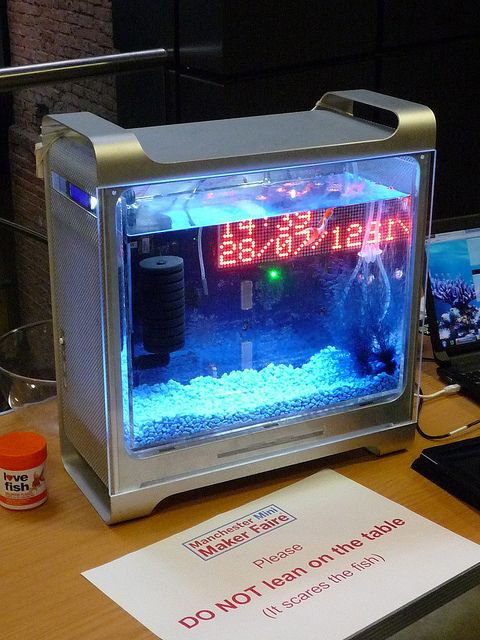
- Ton capacity = 5 x 10 ÷ 0.86 ÷ 3.517 = 16.53 tons
- Oversized chiller = 16.53 x 1.2 = 19.84 tons
- 19.84 ton chiller required
Do I really need a chiller? nine0013
With modern LED lighting and DC powered water pumps, most aquariums in a temperature controlled home will probably not need a chiller. It is usually sufficient to keep the ambient temperature around the aquarium around 70-72°F all year round.
AC powered pumps, metal halides and high fluorescent lighting transfer heat to aquarium water and used to be the main reason home aquarists found it necessary to use coolers; these are all obsolete technologies in modern aquariums. Thus, with modern aquarium technology that uses less electricity and operates at cooler temperatures, most tropical reef aquaria do not require the use of a chiller. If they do so, the required temperature drop will be minimal. nine0003
If you plan to keep cold water animals below 70 or 60 degrees, a much more powerful chiller will do.
David
Expert specialized in industrial chillers for over 10 years, well versed in water cooling solutions for power, aerospace, automotive, electronics, manufacturing, medical industries, etc.
Kaliningrad Aquarium Cooling
Catalog nine0003
Aquarium cooler, an energy -saving cooling fan for the aquarium
1878
3895
In the store
Aquarium cooler for aquarium, a quiet cooler of the aquarium, the aquarium
1115 9000 9000 9000 9000 9000 9000 9000 9000 9000 9000 9000 9000 9000 9000 9000 9000 9000 9000 9000 aquarium cooling fan for
2332
4853
to shop
aquarium cooler fan for aquarium, quiet aquarium cooling fan, aquarium water cooling device
1214
1760
in the store
Aquarium Aquarium Coolerium, a quiet aquarium cooling fan, aquarium water cooling device
1267
1760
Aquarium BOYUU Fish Tank with Acting Tempenship water cooled fan mute 1/2/3/4/5/6 for
1042
1489
in store
aquarium cooler aquarium cooling fan reduce water temperature 2 fan set aquarium cooler wind speed adjustable for
938
1234 9000 aquarium water cooler
1248
1733
to shop
aquarium cooler fan for aquarium, quiet aquarium cooling fan, aquarium water cooler
1230
1922
In the store
Water cooling fan, 1/2/3/4 fans adjustable to the aquarium cooler for
1581
In the Aquarium Outer Supervior Fan -Aquarium, Tichiy Renaire Aquarium Cooler, Aquarium Water Cooler
1107
1402
Shop
BOYU Fish Tank, Low Noise, Automatic Temperature Control, Water Cooling Fan, Silent, 1/2/3/4/5/6 Inch Cooling
1557
2224
In the store
Aquarium Aquarium cooler, a quiet aquarium cooling fan, aquarium water cooling device
1097
1463
Aquarium cooler, energy -saving ocular fan -saving for AK 1650
3423
Shop
Aquarium BOYU Aquarium Automatic Temperature Control Water Cooling Fan Silent 1/2/3/4/5/6 for
963
1396
In the store
Aquarium BOYU Fan for Aquarium with temperature control, tank cooling fan for aquarium, water cooling fan without
1250 9000
1786
in the BOYU Aquarium with automatic temperature control, with automatic temperature control, with automatic temperature control, with automatic temperature control.